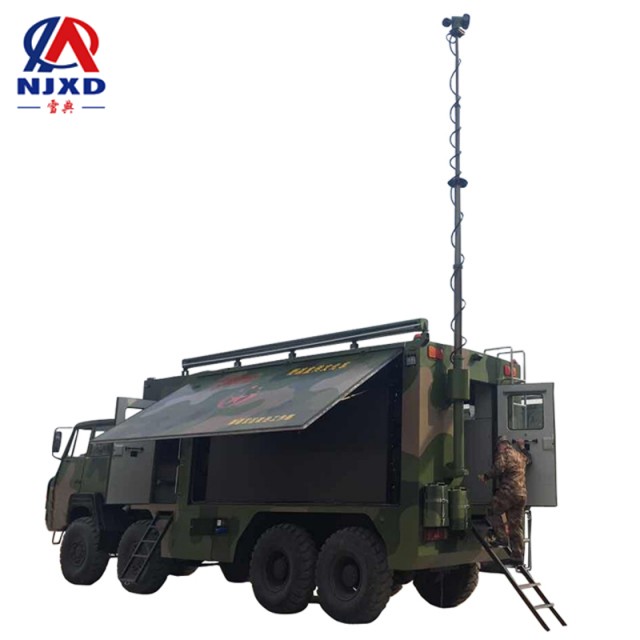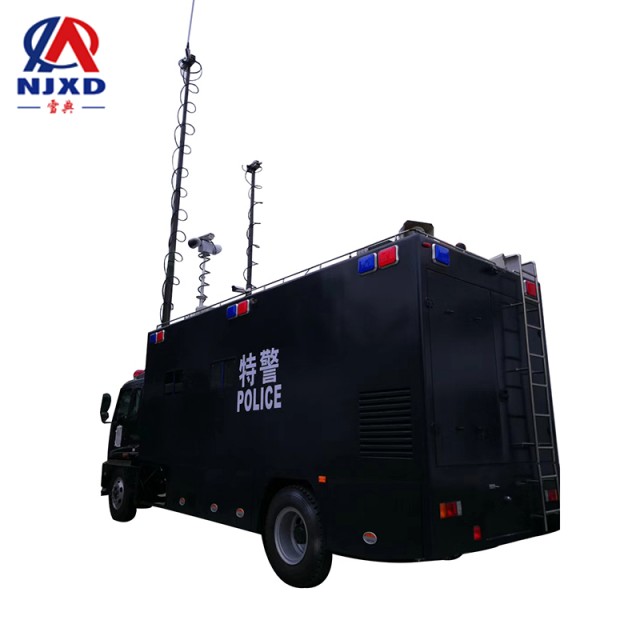NEWS
Importance of Application survey of lifting monitoring equipment
Time:2021-06-22 View:

Investigation refers to identifying, analyzing and evaluating the geological and geographical environment characteristics and geotechnical engineering conditions of the construction site and putting forward reasonable basic suggestions according to the requirements of the construction project, activities of compiling construction project survey documents. Before mining or engineering construction, conduct on-the-spot investigation on topography, geological structure, underground resources, etc.
Definition
A means of geotechnical engineering investigation, including drilling, well exploration, slot exploration, exploring mining exploration, cave exploration, geophysical prospecting, penetration exploration, etc. According to the requirements of the construction project, identify, analyze and evaluate the geological and environmental characteristics and geotechnical engineering conditions of the construction site, and carry out the activities of compiling survey documents.
Other related
Investigation of geotechnical engineering:
The investigation work of rock engineering is carried out by shallow and deep stages according to different purposes. Including
1. Feasibility Study Survey: it should meet the requirements of site selection scheme;
2. Preliminary Investigation: it should meet the requirements of preliminary design;
3. Detailed investigation: It should meet the requirements of construction drawing design;
4. Construction investigation: Construction investigation should be carried out for projects with complex site conditions or special requirements.
Projects with small sites and no special requirements can be combined in the investigation stage. When the layout of the building has been determined and geotechnical engineering data are available on or near the site, detailed investigation can be carried out directly according to the actual situation.

Survey classification
Scale and characteristics
The consequences of engineering damage or affecting normal use caused by geotechnical engineering problems can be divided into three engineering importance levels:
(1) first-class project: important project with serious consequences;
(2) secondary Project: General project with serious consequences;
(3) Level 3 project: Secondary project, the consequences are not serious.
Terrain complexity
According to the complexity of the site, it can be divided into three site levels according to the following regulations:
(1) the first-class site (complex site) meets one of the following conditions:
1) areas with seismic hazard to buildings
2) strong development of adverse geological effects
3) the geological environment has been or may be severely damaged
4) complex topography and landform
5) multi-layer groundwater karst fissure water or other sites with complex hydrogeological conditions that need special research.
(2) the secondary site (medium complex site) meets one of the following conditions:
1) areas that are unfavorable to the earthquake resistance of buildings
2) adverse geological effects generally develop
3) the geological environment has been or may be generally damaged
4) complex topography and landform
5) the ground where the foundation is located below the groundwater level
(3) The third-level site (simple site) meets the following conditions:
1) areas with seismic fortification intensity equal to or less than 6 degrees or favorable for earthquake resistance of buildings
2) undeveloped geological effects
3) the geological environment is basically undamaged
4) simple topography
5) groundwater has no effect on the project

FAQ
Insufficient basis
Only when the design intent is clear can the workload be reasonably arranged in a targeted manner and the geotechnical engineering problems in engineering design and construction be solved. Article 4.1.11 of rock soil engineering reconnaissance specification (GB50021-2001) ( 2009 edition) clearly stipulates that detailed survey should "collect site plan with coordinates and topography, the nature, scale, load, structural characteristics, foundation type, buried depth, allowable deformation of foundation and other materials". However, the preliminary data collection of many survey reports is incomplete, the structural form of the proposed project, the elevation of the planned floor, the coordinates of exploration points and so on are not clear, and the survey technical requirements of the design unit are lacking. We do not pay enough attention to the safety and links involving public interests, and neglect the investigation of the original topography, adverse geological effects and geological disasters of the project site. If a survey report encounters air-raid shelter in multiple boreholes in the project site, and the air-raid shelter is only 3m away from the basement floor, the survey documents are not marked on the plane layout, and are not identified in the report, comment, and do not draw attention. Another example is a residential community, which was originally intramontane basin of the hilly area. There are many artificial fishing ponds, which are used for residential development after being piled up. A survey unit did not collect the original topographic data, nor did it visit nearby residents. It only recommended natural foundation according to the drilling results. The actual situation found in the construction excavation was quite different from that of the survey report, all the drilling holes of the original building were arranged on the pond embankment, which forced the owner to make Foundation changes.
Unreasonable distribution of test samples
GB50021-2001 ( 2009 edition) clearly stipulates the survey spacing, number, location and depth layout of exploration points of different buildings and structures. In actual operation, it is very common that the survey points are not designed according to the specification requirements, and even there are no survey points around the building and at the corners: the hole spacing exceeds the specification and the hole depth is not as required. For example, the pile foundation survey cannot meet the requirements of 4.9.2 and 4.9.4 of GB50021-2001 ( 2009 edition); The depth of exploration holes that need to be identified by building site and liquefaction cannot reach the code for seismic design of buildings (GB50021-2001) the depth requirements of 2008 edition: the test and sampling holes are smaller than 1/3 of the exploration holes; The test sampling cannot meet the mandatory provisions. When undertaking the business, some survey enterprises do not follow the technical standard for sampling undisturbed soil (JGJ89-92), and do not seal the wax, Mark, and send the samples in time; Drill standard loopholes in the sampling quantity, no matter how large the site range is, no matter what the state of the foundation soil is, we only need to meet the low-level requirements of sampling or testing 6 pieces (times), and do not consider the representativeness and uniformity of testing and sampling at all. The weak underlying layer is not sampled and analyzed, and even the layers that should be layered are combined to meet the requirements of not less than 6 pieces (groups) on the surface. The variability of the data is not tested or eliminated. The rationality of such investigation results is naturally worth deliberation, and the influence on the design is obvious. For example, when calculating the bearing capacity fak, the shear strength index c and Φ values should be the shear strength characteristic value of strength in the depth of 1 times the base width below the base. When the state of multi-layer foundation soil or foundation soil under the Foundation changes greatly, how to provide reasonable shear resistance parameters needs more consideration by geotechnical engineers. Without considering the survey level and blindly pursuing drilling footage, the phenomenon of unnecessary increase in survey workload is also common. For example, a residential community is located in bedrock area and has good conditions to adopt natural foundation, but the drilling control depth of a survey unit is even more than the height of the building, the velocity of shear wave test for site classification actually detected the breezy rock formation.

Solution
Industry system issues
The investigation system of our country originates from the Soviet Union model. The investigation, design and construction are seriously out of touch, and the professional division of labor is too detailed. In addition, industry division and local division of harm make the scope of activities of different system units more and more narrow, less and less space leads to backward technology and economy. Field records are getting worse and worse, and the prescribed soil sample barrel is basically not used. The national charging standard is difficult to implement. Comprehensive pricing based on drilling meters is popular in the market, and geotechnical tests with high technical content, analysis and Evaluation of common problems such as subordination are worth pondering. To change this situation, it is necessary to change the current situation that the interests of geotechnical engineers in the investigation unit are tied with drilling. Completely separate the knowledge secret type from the Labor type, give the registered geotechnical engineer an independent and free stage, and complete the transformation from "collective responsibility, normative responsibility" to "geotechnical engineer responsibility. It takes a long way to go, requires the support of corresponding systems (registration, practice, insurance, consultation), and requires the separation of technical regulations and technical standards, the support of laboratory certification and related qualifications requires the improvement of Geotechnical Engineers' self-cultivation.
Market Survey
Although the state has repeatedly applied for the charging of the survey market and the normative law of contracting business, the survey market is still in chaos, and the price is still under pressure, subcontracted, subcontracted, high kickbacks, the phenomenon of attaching or selling stamps or even forging stamps still exists. Although "construction engineering investigation quality management measures" requires "engineering investigation enterprises should strengthen staff technical training and professional ethics education, and improve the quality responsibility awareness of investigators. Field operators such as observers, testers, recorders, and captain should receive professional training before they can take up their posts." However, the qualification of survey labor service lags behind, and there is no restriction mechanism for the qualification identification of survey labor service employees. Many survey units have more outsourcing and subcontracting businesses, and survey workers have not received any industry training. Lack of feedback on relevant survey technologies will inevitably lead to poor survey work and low record quality. What is worrying is that if we do not strengthen the management and training of the labor market, the more prosperous the labor market is, the more opportunities there will be for problems. There is still a certain gap between the position and function of geotechnical engineering investigation and the positioning and expectation given by the state and the government. This is certainly related to people's thinking pattern of "emphasizing design and neglecting investigation", the imperfect system of China's investigation industry, and the vicious competition in the investigation market. Under the current situation, the market access system should be improved, the industry self-discipline and restraint mechanism should be strengthened, and the disadvantages in the geotechnical investigation industry should be fundamentally eliminated, thus truly reflecting the value of geotechnical engineers.
